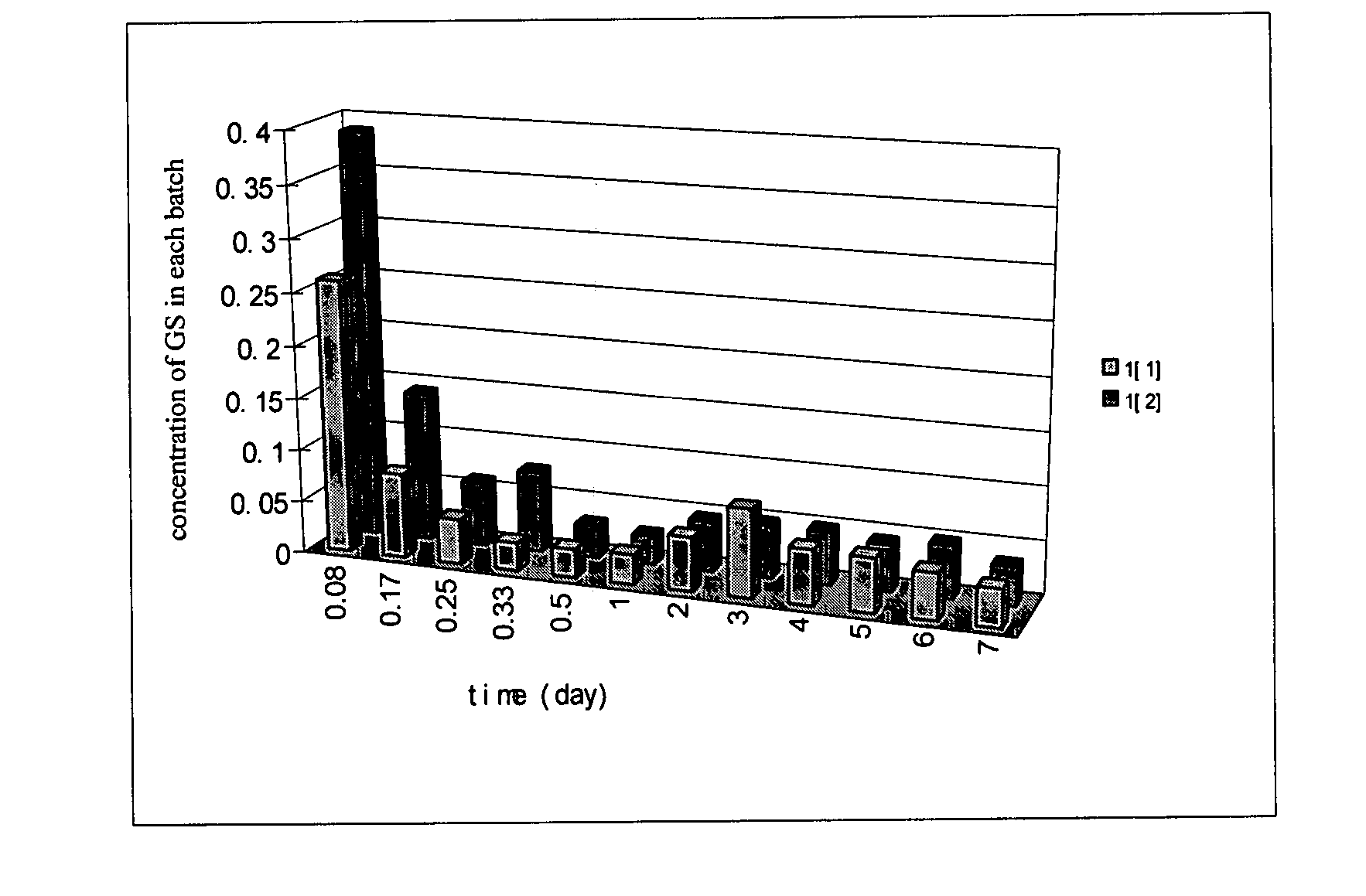Method of preparing hydroxyapatite based drug delivery implant for infection and cancer treatment
a technology of hydroxyapatite and drug delivery, which is applied in the direction of prosthesis, packaging foodstuffs, packaged goods, etc., can solve the problems of drug toxicity, rapid clearance of drug from cancerous tissues, toxic effects on normal cells,
- Summary
- Abstract
- Description
- Claims
- Application Information
AI Technical Summary
Benefits of technology
Problems solved by technology
Method used
Image
Examples
example 2
[0048] A powder mixture of hydroxyapatite, beta tricalcium phosphate, and calcium sulfate hemihydrate nanocrystalline powder matrix was used to bind bone morphogenetic proteins to fill bone voids due to osteoporosis. Bone morphogenetic proteins of BMP4 and BMP7 are purified up to 97% and freeze dried. A mixture of 50 to 50 ratio of BMP4 and BMP7 was then mixed with water and the powder matrix to make into injectable putty. The total protein content is about 0.5% wt. The putty is settable in 5 to 20 minutes in the bone void. In this case, proteins are bound more on to hydroxyapatite and tricalcium phosphate and less on to calcium sulfate in the powder matrix. Calcium sulfate works as a setting agent in this example. Bone morphogenetic proteins are the biomolecules that are sustained released out of the matrix.
PUM
| Property | Measurement | Unit |
|---|---|---|
| Temperature | aaaaa | aaaaa |
| Fraction | aaaaa | aaaaa |
| Composition | aaaaa | aaaaa |
Abstract
Description
Claims
Application Information
 Login to View More
Login to View More - R&D
- Intellectual Property
- Life Sciences
- Materials
- Tech Scout
- Unparalleled Data Quality
- Higher Quality Content
- 60% Fewer Hallucinations
Browse by: Latest US Patents, China's latest patents, Technical Efficacy Thesaurus, Application Domain, Technology Topic, Popular Technical Reports.
© 2025 PatSnap. All rights reserved.Legal|Privacy policy|Modern Slavery Act Transparency Statement|Sitemap|About US| Contact US: help@patsnap.com

